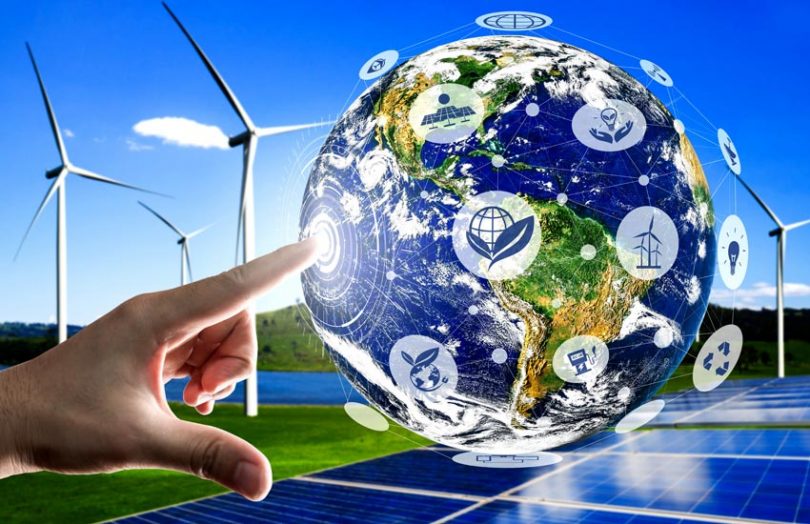This is a guest opinion post from Walter Kok, CEO of Energy Web.
Three big themes we can expect for 2021: 1) Self-sovereign identity for users and assets, 2) Enterprise adoption of open-source blockchain tech, and 3) Economywide climate action
As we collectively look back on a very unexpected 2020, it seems only fitting that blockchain had the biggest impact in the sector where it started: in financial markets. The financial world is rapidly transforming and can no longer ignore digital cryptocurrencies. The evidence is simply overwhelming.
Numerous countries—from China and Singapore in Asia to Sweden and France in Europe to Saudi Arabia and the United Arab Emirates in the Middle East—are all exploring centralized bank digital currency (CBDC) equivalents of their respective fiat currencies. Crypto exchanges like Kraken are taking the unprecedented step of getting bank licenses. Decentralized exchanges are overtaking centralized incumbents (in August, for example, Uniswap surpassed Coinbase Pro in trading volume). And in mid-December Bitcoin reached an all-time high, for the first time crested US$23,000, mainly driven this time by the interest of large enterprises.
Meanwhile, the ‘data for free’ model that has existed for years is coming to an end, and not just because of legislation such as the EU’s GDPR and California’s CCPA. Consumers are fighting back against losing control of their own data as tech giants find themselves the target of lawsuits. In April, a U.S. federal appeals court revived litigation that accused Facebook of violating users’ privacy rights by illegally tracking their Internet activity. In September, a coalition of Canadian provinces sued Google in a proposed class action lawsuit alleging the Internet giant was collecting data without consent. That same month the Irish Data Protection Commission issued a preliminary decision to halt Facebook’s trans-Atlantic data transfers.
As a consequence, self-sovereign identities powered by user-controlled decentralized identifiers are on the rise across various industries, from the energy sector in which Energy Web operates to education to healthcare.
Against this backdrop, blockchain—and decentralized digital technologies more generally—are gaining favor as a new, powerful tool to complement enterprises’ traditional IT software. In particular, I see five emerging trends:
- Vendor lock-in is out. Companies no longer want to be beholden to proprietary systems with specific software vendors and high potential switching costs. It creates too many dependencies on a single vendor, creates liabilities on customer data, and slows down the pace of innovation.
- ‘Open-source’ is the new mantra. Recent analyses have found that open-source code is present in essentially every application on the market, sometimes accounting for more than half the codebase, even in proprietary apps. Open, public networks based on open-source software have the future.
- Consortia are forming to address customer needs. From supply chain software to banking to our own Energy Web ecosystem comprising many of the world’s most-influential energy companies and grid operators, industry consortia are advancing solutions together—not in a private setting but in an open public setting that involves the regulators, customers, and suppliers.
- Blockchain has found its enterprise niche: trust. The word ‘trust’ (and ‘trustless’) is used a lot in blockchain circles, but this really is the killer app or golden use case enterprises have been looking for. For example, in the energy sector, grid operators need to know and trust what assets are connected to their power grids, capable of providing services, and participating in energy markets. The solution offered by decentralized blockchain-based infrastructures allows for efficient and secure onboarding of those assets.
- Green is the new black. Enterprise sustainability—from emissions-reduction targets to 100% renewable energy goals—are de rigueur for the world’s leading companies. That ‘green’ mandate has trickled down into blockchain tech, as consensus mechanisms become increasingly environmentally friendly. It is no longer about generating profits; it is all about sustainable growth of the business and its environment.
Enterprise sustainability—especially green energy investment and other forms of climate action—is particularly timely. Just earlier this month saw the fifth anniversary of the Paris Agreement, landmark international cooperation to tackle the climate crisis. As we close the books on 2020, it remains on track to break new ground as the hottest year on record.
Yet I remain hopeful for the global transition to a low-carbon economy… and enterprise blockchain’s role in enabling and accelerating important parts of that transition. The 2020 edition of Bloomberg New Energy Finance’s New Energy Outlook just released, and it affirms what we’ve believed at Energy Web for the past three years: massive investment is flooding into distributed, customer-centric, low-carbon technologies. BNEF’s deep decarbonization Climate Scenario calls for $78 trillion to $130 trillion of new investment through 2050 in clean electricity, green hydrogen, and associated technologies. Customer investment as a portion of that total is expected to grow exponentially, which is why enterprise blockchain like what we’ve built at Energy Web will be so important in 2021.
As customers add hundreds of millions and eventually billions of distributed energy assets to power grids (e.g., solar panels, batteries, smart thermostats, electric vehicles, heat pumps), grid operators will need to know what they are, where they are, who owns them, what energy services they’re capable of providing, and what electricity markets they’re participating in. And the connections need to be secure. The global energy sector is in the midst of a mass-scale transformation from legacy centralized infrastructure to highly decentralized, digitized networks.
Regulatory changes this year—from FERC Order 2222 in the United States (opening wholesale electricity markets to distributed assets) to the European Commission’s Green New Deal and Circular Economy Action Plan (calling for ‘Battery Passports’)—are only accelerating the transition further. That’s why I expect 2021 will see the energy sector become a breakout example of enterprise blockchain adoption, as the world’s grid operators tap into its many benefits, including self-sovereign identity for users and assets and decentralization of trust in a distributed energy future.






